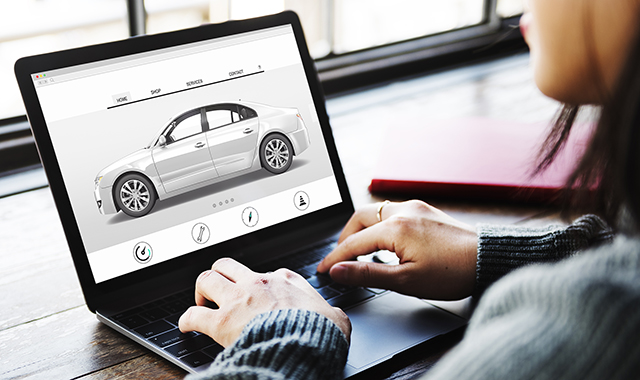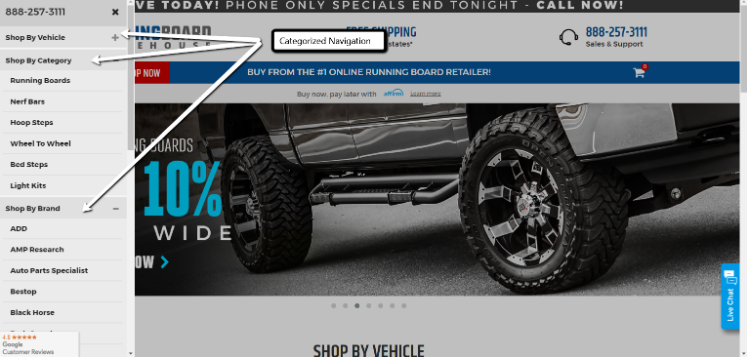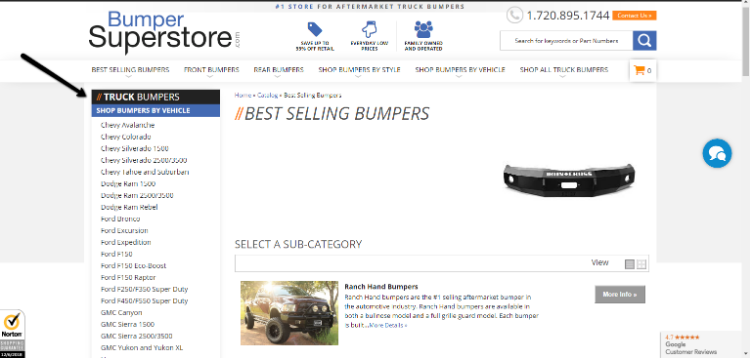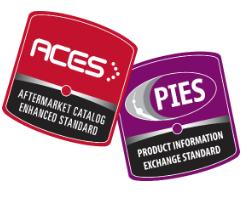
Generate More Traffic by Optimizing Your Automotive Web Images Cross-Platform

Whether you’re selling flashy sets of custom racing wheels or plain plastic clips for interior trim panels, images are absolutely integral to your automotive e-commerce store. They make your website design approachable, they lend reputability to your product listings, and they give all those online shoppers who are visual learners a way to browse your digital shelves without having to read every tedious description and spec.
Your web images can be very effective off-site tools as well. From improved SEO, to ranking at the top of Google Images, to building your brand and audience via social media – sprucing up your web images and sharing them around can help bring a whole lot of new shoppers to your aftermarket automotive web store.
In this guide you’ll learn how to optimize and share your product images to drive more traffic to your automotive aftermarket website.
Being Unique Goes a Long Way
Whenever possible, it’s always better to use a unique image instead of a stock one. Search engines will count it as unique, relevant content, which lends a hand to your on-site SEO. It will also make your product listings stand out from your competitors – customers will see your product pages as tailored, refined, and reputable rather than yet another auto-generated product directory from an anonymous third party.
- What If I Have a Huge Product Catalog or Drop-Shipping Program? If you have thousands of components listed for sale or a large drop-shipping program, taking unique photos of every product you have listed isn’t feasible. Still, you should take the time to snap quality, unique pictures of your top selling products (with multiple perspectives and vantage points whenever possible). Include those on the product pages along with quality product descriptions instead of copy-pasted manufacturer specs. This will make your pages really stand out from the competition.

- What About eCommerce Stores that Sell Premium Aftermarket Parts and Upgrades? On the other end of the spectrum, if you’re an automotive aftermarket store offering custom car parts and performance components, it’s practically imperative that you focus your product listings around unique imagery. Whether it’s racing wheels or performance exhaust systems, selling premium aftermarket components is all about getting the viewer to picture the product installed on their own car. To accomplish this, you need to showcase quality images of the components installed on each specific vehicle that the component is compatible with. If a user is shopping for a custom muffler kit to install on their 2010 Ford Mustang, they’ll be much more enticed into buying it if they’re greeted with a picture of the kit installed on a 2010 Ford Mustang when they click the page. A manufacturer’s image of the uninstalled muffler kit or a stock image of it installed on a Honda Civic will come across as impersonal and generic to the shopper.

Turn Your Product Pictures into Billboards on Google Images
All of the usual SEO rules apply when it comes to ranking your store’s product shots on Google Images. Obviously, due to ample competition, domain authority is going to be the biggest factor when it comes to ranking stock images that you host on your server.
For smaller stores, the way to outrank the big dogs is to post unique product photos that are of equal or better quality than their stock counterparts. Google will rank those unique images within the top results of copy-pasted stock images that larger stores use on their product pages – as discussed above, using unique content makes you stand out from the crowd, literally in this case.
To make sure your unique images are properly scraped and categorized on Google Images.(Check back next week for our “Image Optimization 101” guide.) For now, you can start by surrounding the images with a quality product description, fact-checked specs, and organic keywords that focus on the vehicle make and model which Google users will be searching for.
Reach Some Niches on Social Media
You can turbocharge the outreach of your web images by sprinkling them across social media. Pinterest is a great platform for this because it easily lets you cross-post images straight from your site, copy-paste a relevant portion of your product description, tag some relevant keywords, then set your pictures loose into the wild. Google Images automatically scrapes Pinterest too, so the images you post there and on your web store should pop up side by side in user searches.
Instagram is another great repository for your web images. Stock photos won’t play very well there when it comes to audience reach – they’ll come across as spammy and generic. Instagram is a platform where your unique images can really shine though. Simply cross-post them, throw on a cool filter if you want, and tag them with a dozen or so relevant keywords, such as the name and type of the component, the make and model of vehicle, and colloquial hashtags used by demographics likely to shop at your web store.
For example, you could target pictures of aftermarket wheel sets, lowering springs, and other suspension components at the “#stance” hashtag; or you could target images of customer vehicles equipped with aftermarket off-road suspension components at the “#4x4life” hashtag.
Finding the niche tags that are followed by the demographics you want to target with your products takes a bit of research up front, but it’s a great way to get your brand in front of the right users and potentially build a reliable network of social media followers that you can easily market to. TunerMarket does a great job reaching a niche audience on social media:

Image SEO Is One Integral Piece of the Larger Puzzle
Optimizing your images for search engines and cross-posting them isn’t a magic bullet that will suddenly flood your site with millions of viewers – unless by chance you post an image that goes absolutely viral. Nevertheless, it’s an integral part of the overall SEO picture that will give your web store a better foothold on the climb up the ladder of SERPs.
In the end – as always – content is king. Publish great content, supplement it with quality images, make sure everything is search engine optimized along the way, and your automotive aftermarket e-commerce store will have a great foundation from which to build.
If you would like to discuss or explore these techniques or any other site optimization or digital marketing issues for your auto aftermarket site, please drop us a line.




















